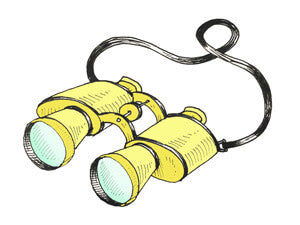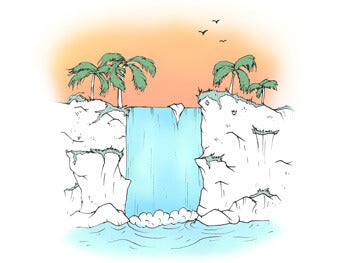HOW TO MAKE THE PERFECT CUP OF COFFEE
Drinking in the day’s first sip of coffee is like paradise massaging the taste buds. It is, as one coffee-in-a-can company figured out long ago, the best part of waking up. For a single moment at your favorite coffee shop, or while your fingers hug your favorite mug in the kitchen, you’ve been taken to the scene of your last vacation – the day’s worries momentarily melting away, letting you breathe in the serenity of sunshine just as the caffeine smacks your brain.
Realizing that is exactly why getting the first cup of the day right is so important for any coffee-lover. Nail that perfect cup once, and you won’t want to go back.
In brief, making the perfect cup of coffee will require three elements, above all else: the right water, the right roast and – this is the biggie – your attention. Tempting as it may be to throw your grinds in a Mr. Coffee machine and walk away, it likely won’t produce the results you’re looking for. Show your coffee some love in the brewing process, though, and it’ll give you heaping amounts – or at least a few tablespoons worth – of love in return.
Below, find the highlights of what you need to know to brew the perfect cup of coffee.
Realizing that is exactly why getting the first cup of the day right is so important for any coffee-lover. Nail that perfect cup once, and you won’t want to go back.
In brief, making the perfect cup of coffee will require three elements, above all else: the right water, the right roast and – this is the biggie – your attention. Tempting as it may be to throw your grinds in a Mr. Coffee machine and walk away, it likely won’t produce the results you’re looking for. Show your coffee some love in the brewing process, though, and it’ll give you heaping amounts – or at least a few tablespoons worth – of love in return.
Below, find the highlights of what you need to know to brew the perfect cup of coffee.

Finding the Right Roast
Fact: There really is no precise rule on when a roasted coffee is best consumed. But you can count on a fresh roast producing a quality result. What you’ll want to do in the search for the right roast and roast age is ask questions of who’s selling you the roast. Some coffees (many of them, actually) are ones you’ll want to consume within five days of their roast date for optimal results, while many more are fairly consistent in quality for about a month after the roast date. But what flavors you extract are entirely dependent on how porous the beans become over time and how they react to water. And that’s a giant “question mark” even the most talented barista can’t erase. If you want to know if your beans are stale, though, pay attention to how it pours in the cup. If you’re not seeing a head – that slight foam that bubbles at the top of your cup – you’ve likely waited too long to use your coffee.
Take a world tour of amazing coffee

Take a world tour of amazing coffee
- Coffee you can’t find on the shelves
- Roasted fresh & delivered to you
- Tailored to your preferences
- All for under $.30 a cup

Getting the Right Water Quality and Temperature
Though it may not be the most pleasant way to think of it, the flavor profile of your coffee depends on how much you’re agitating the beans. Or, rather, how much water is agitating the bean. The temperature of your water is what will matter most in determining a coffee’s flavor: Pour at a lower temperature (185 degrees) and you’ll extract fewer of the bean’s nascent flavor notes and end with a more bitter taste; pour at a higher temperature (205 degrees), and you’ll discover a coffee that’s extracted more from the bean. This is the process of hydrolysis shaking loose different compounds in your coffee. Also important, as you might guess, is the quality of the water you’re using. In short: The fewer the minerals in the water, the better. Because tap water quality varies from city to city, invest in a top-shelf filter like a Brita. Also, never re-boil water that’s been through the heating process (yes, we know how convenient it is to leave water in a kettle), and wait about 30 seconds after heating your water to actually begin pouring over your coffee. And, if you really want to be a chemist about it, test your water to make sure it’s in the range of pH 7.
Get Your Grind On
Not all grinds are the same; there is no one-size-fits-all grind size for making a quality cup of coffee. And, in truth, what constitutes the “right grind” is entirely based on your taste preference. But you do need a grinder. The two basics to consider when grinding your coffee: Do you want a sweeter cup, and do you want a caffeinated cup? A finer grind – which means smaller particles with a larger surface area to slow the movement of water -- will extract more of a coffee’s flavor notes, while a coarse grind will produce a cup that packs a Mike Tyson-level caffeine punch. Also, if you’re using an older roast, you’ll almost always want to aim for a finer grind to ensure you’re getting as much flavor as possible. Mixing coffee grinds, too, can ruin your perfect-cup-chasing effort. To avoid this, clean your grinder after every use, even if it’s just a tap-tap to the machine to shake loose bean debris. It might not be obvious, but those leftover coffee grinds from last Sunday’s brunch will make your fresh roast a lot more bitter. One last point of note for grinding: There is also no standard system for grind settings – as ideal as that might be, in a coffee utopia. A “4” on your machine might be a 12 on a different one. Womp womp.
The Impact of Brew Methods
Naturally, one of the biggest variables in how your cup comes out is what you’re using to pour. Use a Chemex – or any similar pour-over tool – and you’ll concoct a cup that’s silkier and generally more acidic. (Or “brighter,” if you’ve heard the term before.) It’s the preferred method for coffees that have citrus or floral notes; with a Chemex filter, coffee is less exposed to water and all-around less bitter. By comparison, a French Press – which no one can definitively say was invented in France, by the way – will produce an oilier, more full-bodied cup of coffee. Think: More velvet than silk. Because it’s a steeping method, you’re likely to get a more consistent taste with a French Press, regardless of roast or targeted coffee flavor notes. But it’s especially ideal for an earthier coffee. Percolators and batch brews, meanwhile, will offer a reasonably consistent result for your coffee, but also offer less control over the process. Meanwhile, an AeroPress – by all means it’s own beast to tackle – will give you more of a hybrid of the Chemex and a French Press methods, offering up an abundance of versatility with how it’s used.
Top 5 Coffee Grinders

Top 5 Coffee Grinders
One of the best ways to significantly better your brew at home is to use a good grinder—here are our picks
How to brew a cup of paradise(joe) using a French Press
Finally, here’s the step-by-step of what you need to know to brew your ideal cup – using a French Press. Outside of the coffee machine that might still be lingering in your pantry from the ‘80s, the French Press is what most of us will be familiar with as manual brewing. So, here’s a rundown of what you need to do to perfect your cup (or two) of coffee.

- Measure your coffee. The standard ratio is approximately 2 tablespoons of coffee per 6 ounces of water. Don’t be afraid to add a few extra beans to be on the safe side – you can more approximately measure out your coffee using a scale after it’s ground.
- Grind your coffee. Alright, this is where the coffee-making process really begins. Go for a finer roast if you want a sweeter cup of coffee, or a coarser grind if you’re aiming for a satisfying, weighty bitter. Make sure the grinder is clean before using, then feel free to press the magic button.
- Prepare the water. You’ll want to prepare the water last, to ensure the water is the temperature you’re aiming for. Pour from the filter, and let the water sit off from the boil for about 30 seconds before immersing your coffee grounds in the French Press.
- Pour. Saturate the grounds evenly with a smooth, steady pour that will agitate the coffee grounds. Do not put the lid on top of the brewer just yet.
- Soak and stir. Let the grounds absorb the water for approximately 30 seconds before stirring – a few gentle motions using the back of a spoon around the top layer of the mixture and along the sides, to immerse any grounds that are stuck.
- Brew. Let the water extract from the grounds for 2 minutes and 30 seconds. Less than that, and you’ll find your coffee may be too sweet or even sour. Any longer, and your coffee will be over-extracted and unappetizingly bitter – so, set a timer.
- Plunge. There really is no wrong way to push here – just a simple, even push-through of the filter down to the bottom. However, it’s not a clogged toilet – don’t exert too much force or, of course, your coffee will splash. Or you may break the machine, if it’s glass.
- Pour. Word to the wise: The flavor notes of your coffee will change as the cup cools. If at first you’re not tasting what was intended, let it continue to setup. What you taste when it’s piping hot is not what you’ll taste when it’s cooled to a lukewarm temperature.
Conclusion
Just like paradise is in the eye of the beholder, so too is the perfect cup of coffee. The joy of coffee – beyond those transporting effects its caffeine kick offers in the morning – is how much experimentation is involved. It’s the ultimate test of trial and error. Don’t be afraid to experiment with grind sizes, coffee roasts, water temperatures and brew methods until you find your “just right” cup of coffee. Let your taste buds be the map to paradise.
For a limited time - Take 50% off of your first shipment of amazing single origin, specialty grade coffee from around the world.